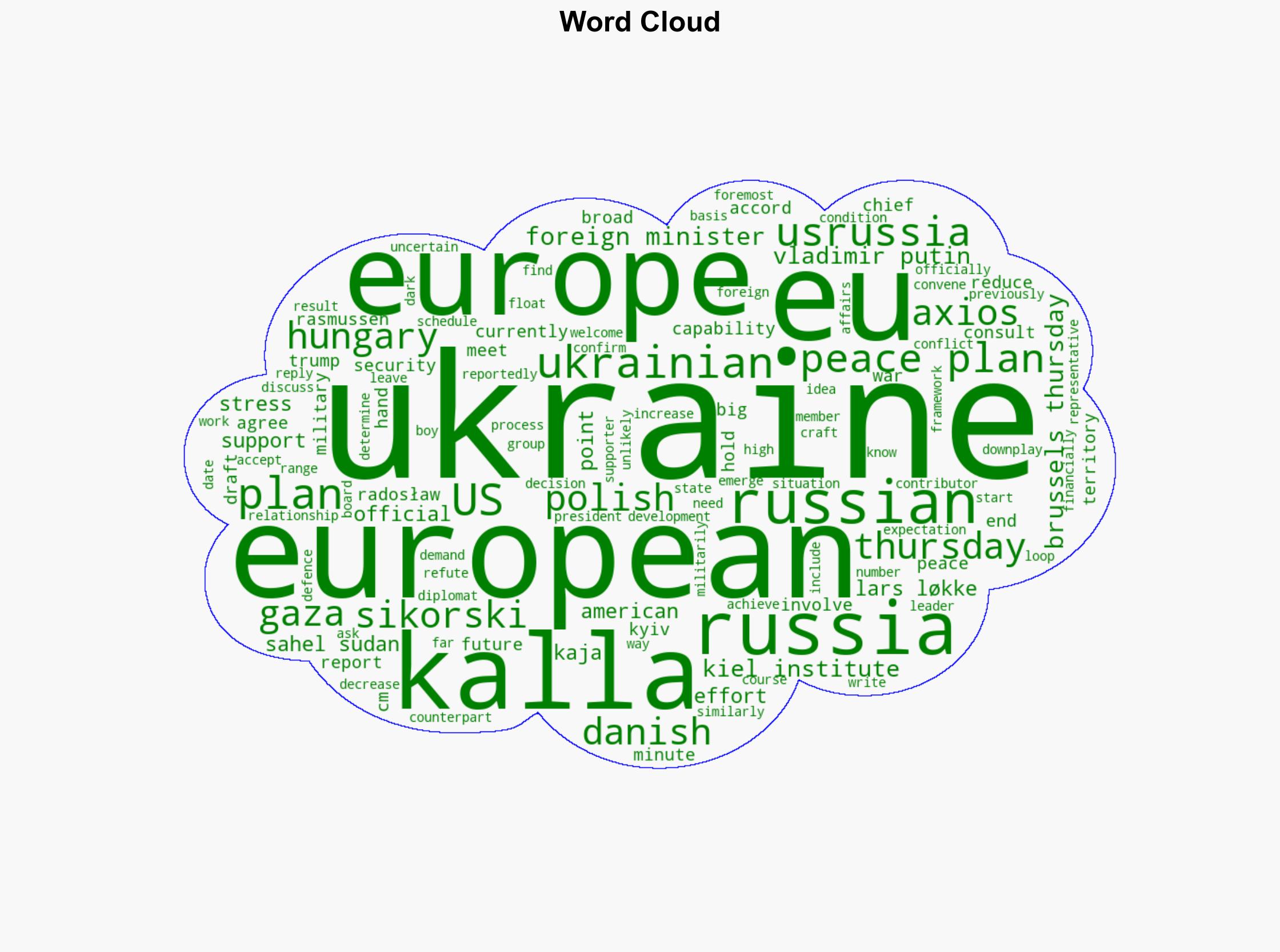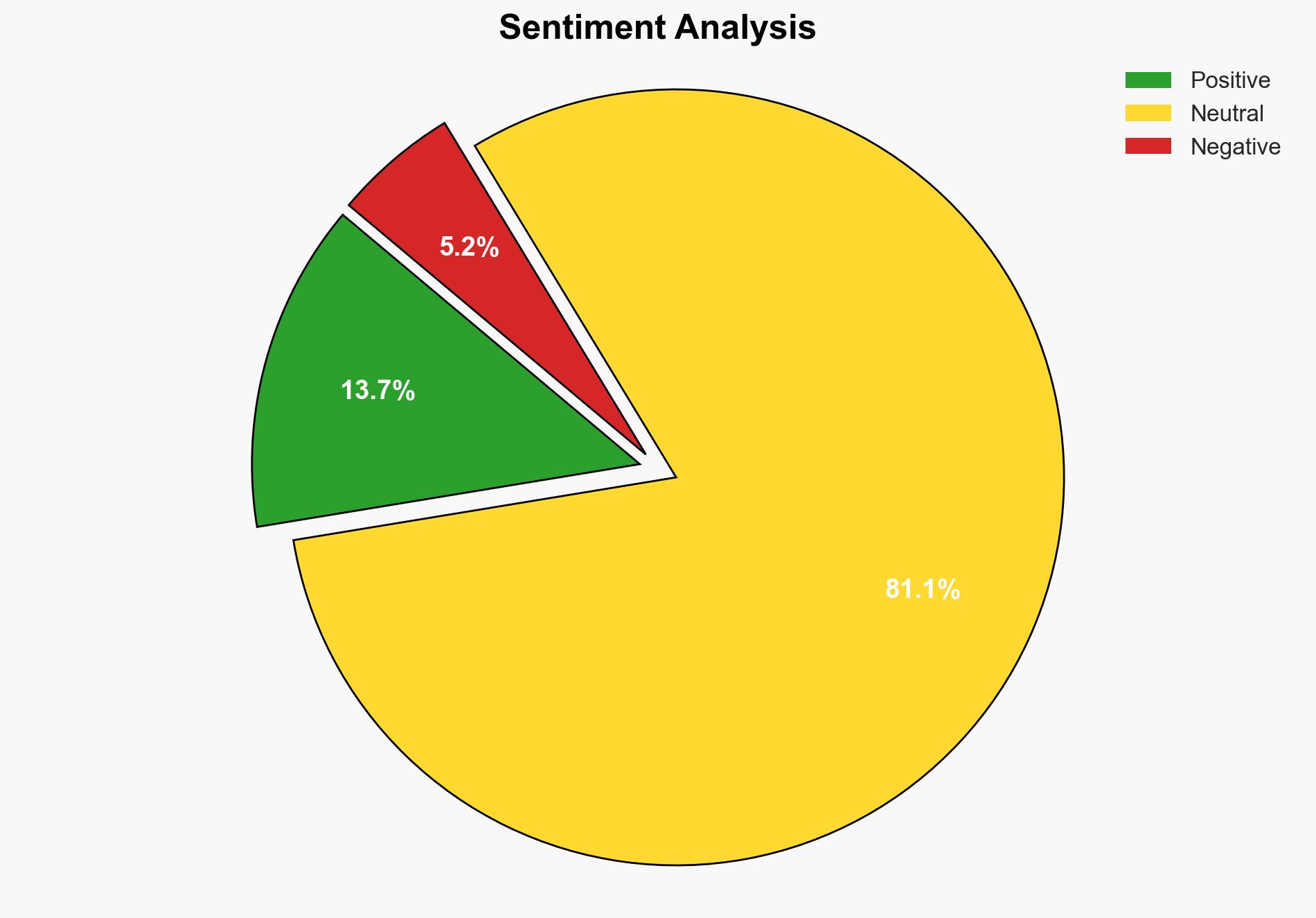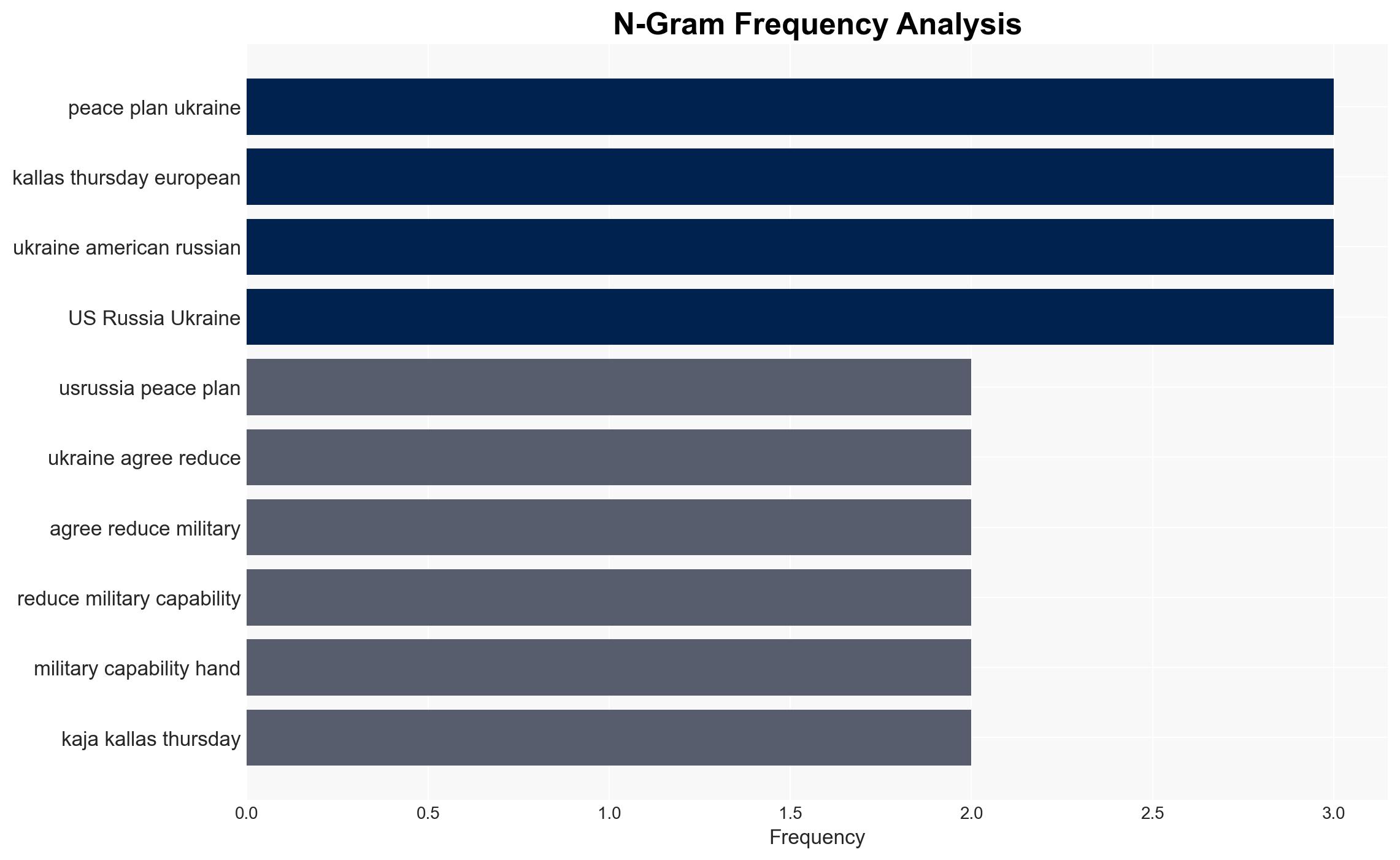Kallas confirms Europeans were not part of US-Russia peace plan for Ukraine – EURACTIV
Published on: 2025-11-20
AI-powered OSINT brief from verified open sources. Automated NLP signal extraction with human verification. See our Methodology and Why WorldWideWatchers.
Intelligence Report:
1. BLUF (Bottom Line Up Front)
The most supported hypothesis is that the US and Russia are pursuing a bilateral peace plan for Ukraine without European involvement, potentially sidelining EU interests and influence in the region. Confidence Level: Moderate. Recommended action: The EU should proactively engage with both the US and Russia to ensure European interests are considered in any peace negotiations.
2. Competing Hypotheses
Hypothesis 1: The US and Russia are negotiating a peace plan for Ukraine independently, excluding European input to streamline negotiations and potentially reach a quicker resolution.
Hypothesis 2: The reports of a US-Russia peace plan are exaggerated or misrepresented, and there is no significant exclusion of European involvement; rather, the EU is being consulted informally or indirectly.
The first hypothesis is more likely due to the explicit statements from European officials indicating a lack of consultation, and the historical precedent of US-Russia bilateral negotiations on security matters.
3. Key Assumptions and Red Flags
Assumptions: It is assumed that the US and Russia can independently negotiate a viable peace plan without European input and that such a plan would be acceptable to Ukraine.
Red Flags: The absence of formal European involvement raises concerns about the legitimacy and sustainability of any agreement reached. Additionally, the potential for misinformation or strategic deception by either the US or Russia to manipulate European responses should be considered.
4. Implications and Strategic Risks
The exclusion of Europe from peace negotiations could weaken EU influence in Eastern Europe and undermine its role as a security actor. This could lead to political fragmentation within the EU, as member states may have differing responses to the situation. There is also a risk of economic repercussions if the peace plan affects European investments or energy security. Informationally, the EU could face challenges in maintaining a unified narrative if sidelined in the peace process.
5. Recommendations and Outlook
- Engage diplomatically with the US and Russia to assert the necessity of European involvement in any peace process.
- Coordinate with Ukraine to ensure its interests align with European security objectives.
- Best Scenario: The EU successfully integrates into the peace process, ensuring a balanced and sustainable resolution.
- Worst Scenario: The US and Russia reach an agreement that undermines European security and economic interests.
- Most-likely Scenario: The EU manages to influence the peace process indirectly through diplomatic pressure and alliances.
6. Key Individuals and Entities
Kaja Kallas, Lars Løkke Rasmussen, Radosław Sikorski, Vladimir Putin, Donald Trump.
7. Thematic Tags
Regional Focus, Regional Focus: Europe, Ukraine, US-Russia Relations
Structured Analytic Techniques Applied
- Causal Layered Analysis (CLA): Analyze events across surface happenings, systems, worldviews, and myths.
- Cross-Impact Simulation: Model ripple effects across neighboring states, conflicts, or economic dependencies.
- Scenario Generation: Explore divergent futures under varying assumptions to identify plausible paths.
Explore more:
Regional Focus Briefs ·
Daily Summary ·
Support us





